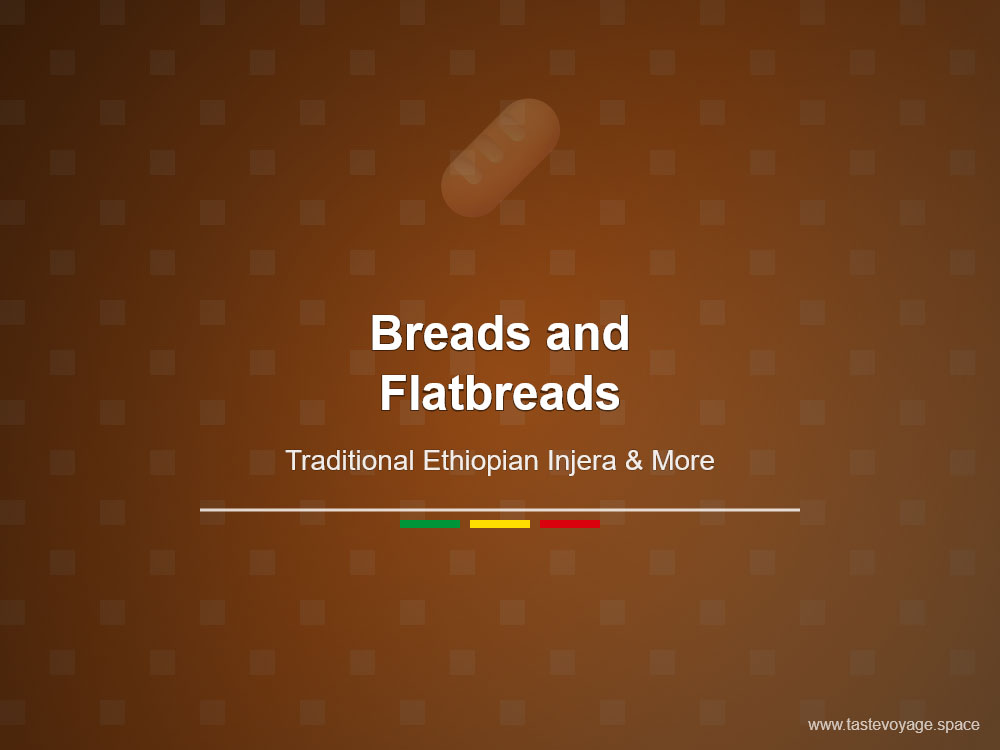Authentic Ethiopian Bread Baking: Traditional Methods Revealed
Travel the World Through Food >> Breads and Flatbreads>>Ethiopian Cuisine>> Authentic Ethiopian Bread Baking: Traditional Methods Revealed
Authentic Ethiopian Bread Baking: Traditional Methods Revealed
The Rich Cultural Heritage of Ethiopian Traditional Bread
Ethiopian traditional bread holds a special place in the heart of the country’s culinary heritage. Known locally as injera, this unique bread is more than just a staple; it is a symbol of community, hospitality, and cultural identity. The preparation and sharing of injera reflect Ethiopia’s deep-rooted traditions and foster a sense of belonging among its people.
A Culinary Icon with Deep Roots
Injera is distinguished by its spongy texture, slightly tangy flavor, and distinctive appearance. Made primarily from teff flour, a grain native to Ethiopia, it embodies the country’s agricultural richness. The preparation of injera involves a unique fermentation process that can take several days, allowing the bread to develop its signature taste and texture. This process not only enhances flavor but also highlights the ingenuity of traditional Ethiopian culinary practices.
A Central Element of Ethiopian Food Culture
Ethiopian Cuisine is celebrated for its communal style of dining, and injera acts as both a plate and a utensil. Dishes like doro wat (spicy chicken stew) or shiro (spiced chickpea paste) are served atop an enormous piece of injera, which diners tear into with their hands. This method encourages sharing and social interaction, emphasizing the importance of togetherness in Ethiopian culture.
Significance Beyond Nourishment
The making and sharing of injera extend beyond mere sustenance. It symbolizes unity, hospitality, and respect. Serving injera to guests demonstrates generosity and warmth, making it an essential part of social gatherings and celebrations. The traditional baking methods, often carried out in communal settings, strengthen social bonds and preserve ancestral knowledge passed down through generations.
An Artistic and Cultural Expression
Ethiopian bread baking methods are a reflection of creativity and tradition. The skill involved in fermenting the dough, shaping the bread, and maintaining the Traditional Cooking techniques reveals a rich cultural artistry. The process connects communities with their history and environment, showcasing the importance of food as a vessel of cultural expression.
Preserving Culinary Heritage
Today, Ethiopian traditional bread continues to thrive, both in local communities and around the world. Its cultural significance endures as a symbol of national pride and culinary excellence. Preserving these traditional baking methods ensures that this unique aspect of Ethiopian culture remains vibrant for future generations.
Conclusion
Ethiopian traditional bread, or injera, is more than just a dietary staple. It embodies the country’s history, social values, and artistic expression. As a culinary treasure, injera invites us to appreciate Ethiopia’s rich cultural fabric and the timeless traditions that continue to nourish both body and soul. Embracing this ancient craft allows us to celebrate the enduring beauty of Ethiopian cuisine and its place in the global culinary landscape.
